
Washington Dulles International Airport and Reagan National hit a new travel record last year.
The Metropolitan Washington Airport Authority hosted 50.6 million total passengers last year, setting a new passenger record at Reagan and an international passenger record at Dulles.
“Setting a new record is a remarkable accomplishment that can be credited to continuing recovery from the COVID pandemic and the hard work of our airport team and their partners,” MWAA President and CEO Jack Potter said. “We are not slowing down as upgrades continue for our customers at Reagan National, as well as a new concourse at Dulles International. Our team thrives on recruiting new airline service and finding new ways to provide an outstanding travel experience while planning to meet the region’s long-term transportation needs.”
Between 2022 and 2023, Dulles saw a nearly 27% jump in international activity. Overall, the airport logged 25 million passengers for the year.
“The upward trend can be credited to a strong resurgence in travel demand that led to eight new airlines launching nonstop flights to destinations around the globe over the past two years. With new flights announced for 2024, this brings the airport’s total to 42 airlines and 139 destinations,” MWAA said in a press release.
New service is planned from on the following route options:
American to Bermuda
American to Hyannis, Massachusetts
AeroMexico to Mexico City
Allegiant to Punta Gorda, Florida
Southern Airways Express to Williamsport, Pennsylvania
Southwest to Phoenix
Sun Country to Minneapolis
Swiss International to Zurich
United to Anchorage
United to Vancouver
United Express to Philadelphia, Harrisburg, State College and Wilkes-Barre/Scranton, Pennsylvania
The passenger count suggests Dulles has rebounded from the plunge in travel during the first years of the COVID-19 pandemic, when the international passenger count stood at a meager 2 million in 2020 and 3.4 million in 2021.

(Updated at 12:05 p.m.) Colds are in the air this winter, as a new COVID-19 variant has joined forces with the flu and RSV to produce a particularly challenging respiratory illness season.
Covid-related hospitalization levels remain low in Fairfax County, where 145 patients were admitted in the week that ended on Dec. 30 — a 46% increase from the previous week. But hospital visits and deaths are on the rise in Virginia and nationally, with the U.S. death toll exceeding 1.1 million people since the first case in 2020.
As of Tuesday (Jan. 9), 1,758 people have died from Covid in the Fairfax Health District, which includes the cities of Fairfax and Falls Church, according to the latest Virginia Department of Health data.
The district has had 23 COVID-19 deaths in the past 13 weeks — an increase from previous months, but overall, 2023 saw fewer deaths each month than previous years, according to the Fairfax County Health Department.
“The average age of the individuals who have passed due to COVID in the past 13 weeks is 80 years old and a third of these were associated with a long-term care or skilled nursing facility,” an FCHD spokesperson said. “Although COVID deaths are down from previous years, it does remain a threat in our communities and particularly for older populations with comorbidities.”
Now the most prevalent variant in the country, JN.1 appears to spread more efficiently than other forms of the coronavirus, but the vaccines updated last fall are still effective, though only 17.4% of residents have gotten those shots, the county health department said in an update yesterday.
According to the FCHD, Northern Virginia is experiencing a “very high intensity level” of influenza-like illnesses, which make up 6.7% of all emergency department and urgent care visits, led by young kids 4 and under. Inova reinstated a face mask requirement on Jan. 4 in response to the prevalence of respiratory illness.
The county health department says RSV (Respiratory Syncytial Virus Infection) activity is decreasing in the Fairfax Health District, but it’s still elevated elsewhere in the country, especially among young kids and older adults.
“If you are at high risk for severe illness from RSV, you should continue to take steps to protect yourself, especially if you are traveling or hosting a visitor,” the FCHD said.
The department is encouraging residents to get vaccinated against Covid and the flu and to take other steps to prevent spreading illness, including wearing a high-quality mask, covering coughs and sneezes and staying home when sick.
Photo via Kelly Sikkema on Unsplash
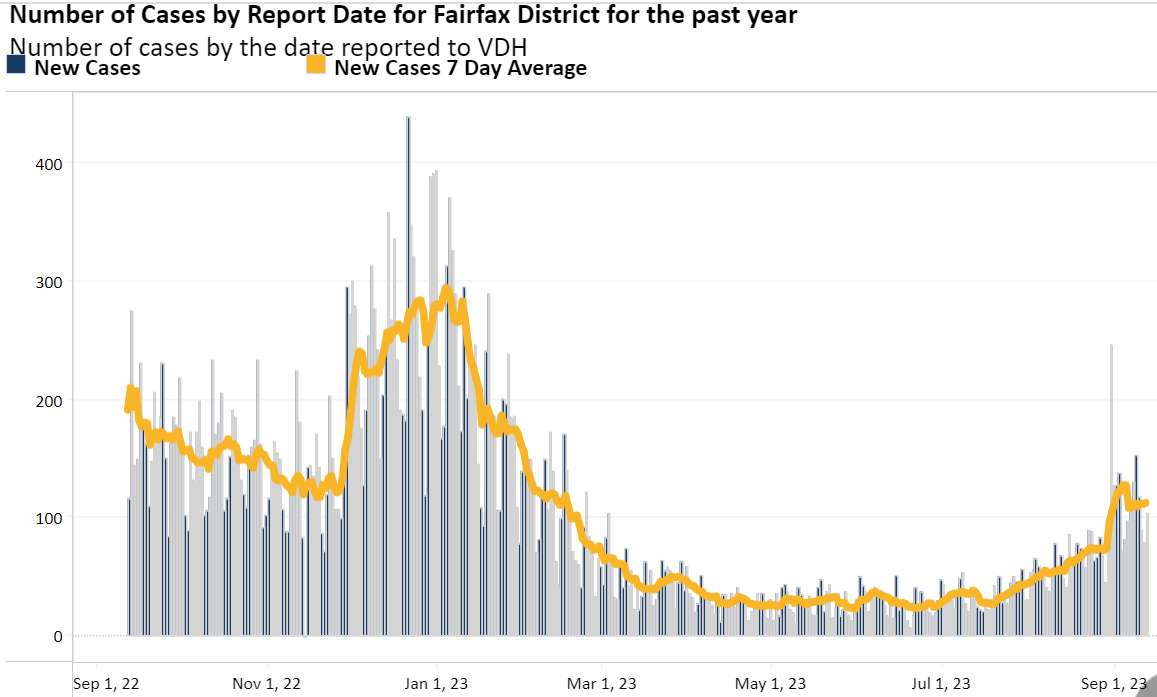
(Updated at 4:45 p.m.) A new batch of COVID-19 vaccines is on the way, as the disease appears to be surging once again.
The Centers for Disease Control and Prevention announced Tuesday (Sept. 14) that it recommends everyone 6 months and older get the shots, which have been updated to provide improved protection against the variants fueling the current rise in illness and hospitalizations.
Slated to become available this week, the new vaccines from Pfizer-BioNTech and Moderna are rolling out in time to coincide with the annual fall flu shot season, an approach that the Fairfax County Health Department supports.
“People are able to get the flu shot and the updated COVID-19 vaccine together and this fall (September or October) is a good time to be protected against these illnesses as people spend more time indoors and viruses may be more apt to spread,” FCHD spokesperson Lucy Caldwell said by email.
With Covid no longer considered a federal health emergency, the updated vaccines are the first ones not being allocated by the government. Instead, doctor’s offices, pharmacies and other providers must order them directly, making it less clear when they’ll become available.
The FCHD advises residents to check vaccines.gov or contact their doctor, pediatrician or local pharmacy to see if they’ll have the vaccine. Retail pharmacies like Walgreens and CVS have said that appointments will become available through their websites this week.
The cost of the vaccines is covered by private insurance, along with Medicare and Medicaid. The roughly 7% of Fairfax County residents who aren’t insured should be able to get the shots for free from providers participating in the CDC’s Bridge Access program, according to the FCHD.
The county health department also anticipates obtaining a vaccine supply later this month, Caldwell says. Residents of the Fairfax Health District, which also includes the cities of Fairfax and Falls Church, will be able to make an appointment by calling 703-246-7100.
Caldwell noted that the health department’s supply is typically reserved for individuals who don’t have a primary care provider or another option for getting vaccinated. It also doesn’t accept private insurance as payment, though it’s in-network for Medicaid.
“Staying up to date and getting the new, updated vaccine is important,” the FCHD said. “The virus continues to evolve and protection against it from previous vaccination decreases over time. Getting a COVID-19 vaccine is a safer, more reliable way to build protection than getting sick with COVID-19. Getting vaccinated also reduces your chances of getting long COVID, which can last weeks, months, and even years, after initial illness.”
About 80% of Fairfax Health District residents 6 months and older — or 942,180 people — completed their initial round of vaccinations, according to FCHD data. About 50% of that population has received at least three doses, but just 25.7% got the most recent booster.
People should wait two months after their last Covid shot or two to three months after an infection before getting the updated vaccine, according to the FCHD.
After a relatively quiet spring and early summer, Fairfax County has seen an increase in Covid since July, including upticks in hospitalizations, emergency department visits and outbreaks, the health department says.
As of Sept. 2, the county admitted 52 new hospital patients with Covid over that week, a 15.6% increase over the preceding week for a hospitalization rate of 2.6 people per 100,000 residents, according to the CDC.
As of Tuesday, the Fairfax Health District was averaging 111.7 cases over the past seven days — case levels not seen since February, per Virginia Department of Health data.
The FCHD says it has been “closely tracking emergency department visits and hospitalizations from COVID-19 and identifying and investigating clusters of cases in schools, long-term care facilities, and other settings.”
“FCHD has the ability to scale up resources if necessary,” Caldwell said. “But the optimal situation is for people in our community to get the updated COVID-19 vaccine and take other measures that reduce the spread of illness, like good handwashing, so that we can prevent or mitigate a possible surge.”
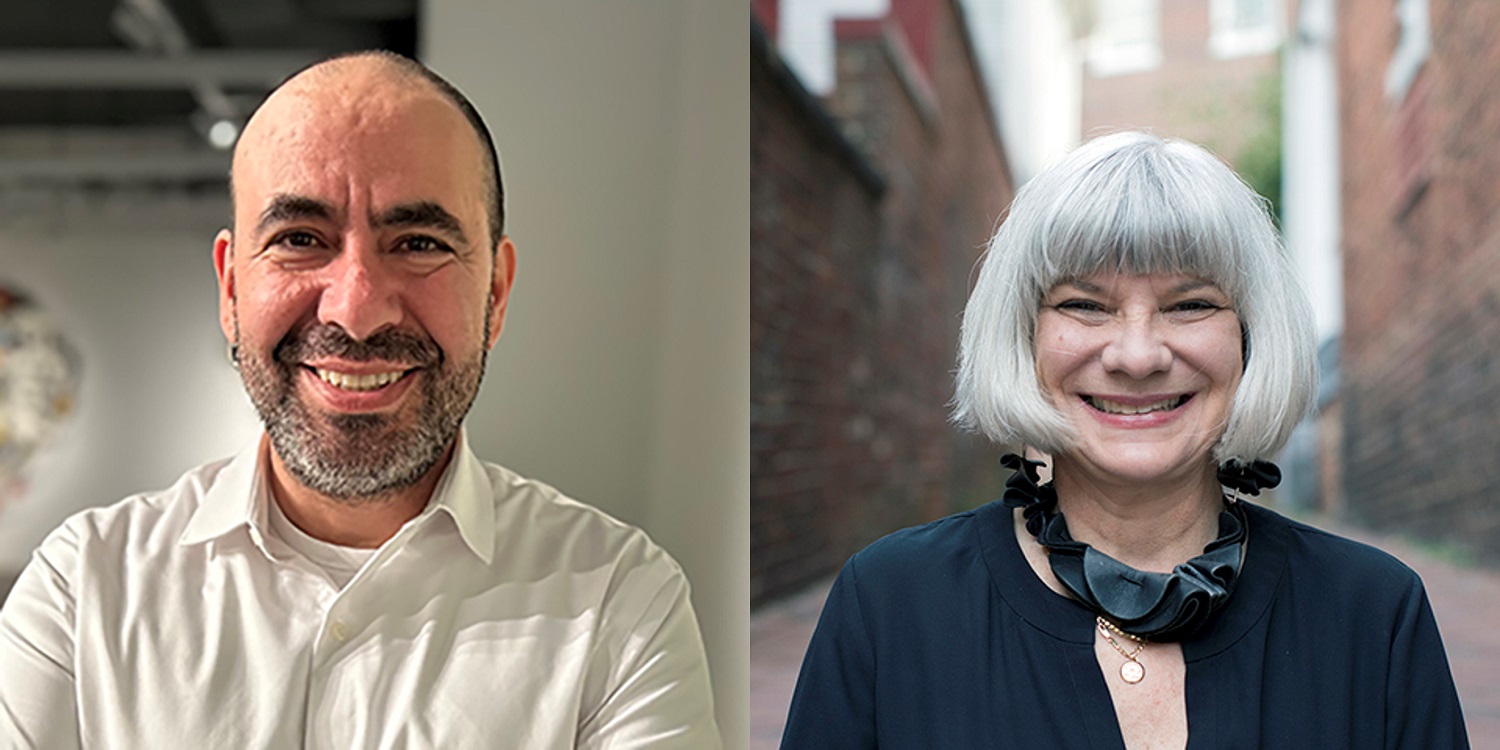
Fairfax County is envisioning its forthcoming COVID-19 memorial as a space for reflection — something that’s been difficult to come by since the pandemic upended life temporarily for some and more permanently for others.
The concept comes from artists Miriam Gusevich and Salvatore Pirrone, who have been chosen to design and build the memorial, ArtsFairfax announced Monday (Aug. 21).
“We need memorial spaces and artworks to help us appreciate the bonds we share as human beings,” ArtsFairfax President and CEO Linda Sullivan said. “With such artworks, engagement invites us to learn from our pain and redouble our efforts to lift up each other every day, not just in emergencies.”
A nonprofit designated as the county’s official arts agency, ArtsFairfax and the Fairfax County Arts Committee selected Gusevich and Pirrone unanimously after putting out an open call for artists earlier this year.
According to ArtsFairfax, the pair proposed “a tall and slender memorial” called “Circles of Memory” that will “protect a contemplative space” in honor of local residents who have died from COVID-19, along with the health care workers, first responders and others involved in the county’s emergency response.
The memorial will be installed in front of the county’s Public Safety Headquarters and Herrity Building at 12055 Government Center Parkway.
“The monument will be comprised of a 27-foot tall hollow concrete cone, divided by a break in the center and topped with an oculus from which to view the sky. Visitors will be invited to sit inside the structure and on the surrounding benches,” ArtsFairfax said.
The Fairfax County Board of Supervisors directed county staff in February 2022 to start planning for a memorial that will symbolize the pandemic’s impact on the local community.
Since then, Covid has ceased to be designated as an official public health emergency both locally and nationally, but the disease continues to spread, albeit at lower levels of severity than in previous years. As of yesterday (Tuesday), the Fairfax Health District had recorded 273,842 cases, 5,403 hospitalizations and 1,794 deaths, according to Virginia Department of Health data.
The county’s memorial will create a communal space for visitors to acknowledge those losses.
“We hope to provide an environment that will bring people together,” Pirrone said. “The memorial strives to be a place of reverence for the lives lost and the people who honor them.”
The design will be finalized after the artists conduct a full site review, according to ArtsFairfax Director of Communications Allison Mui.
The agency says the project will take “several months to complete,” including opportunities for members of the public to meet the artists, discuss the design concepts and “share experiences.”
“Art does not cure, yet it can help us heal. Creativity can offer renewal; through it we can nurture faith in the future,” Gusevich said.
Here’s more on Gusevich and Pirrone from the press release: Read More
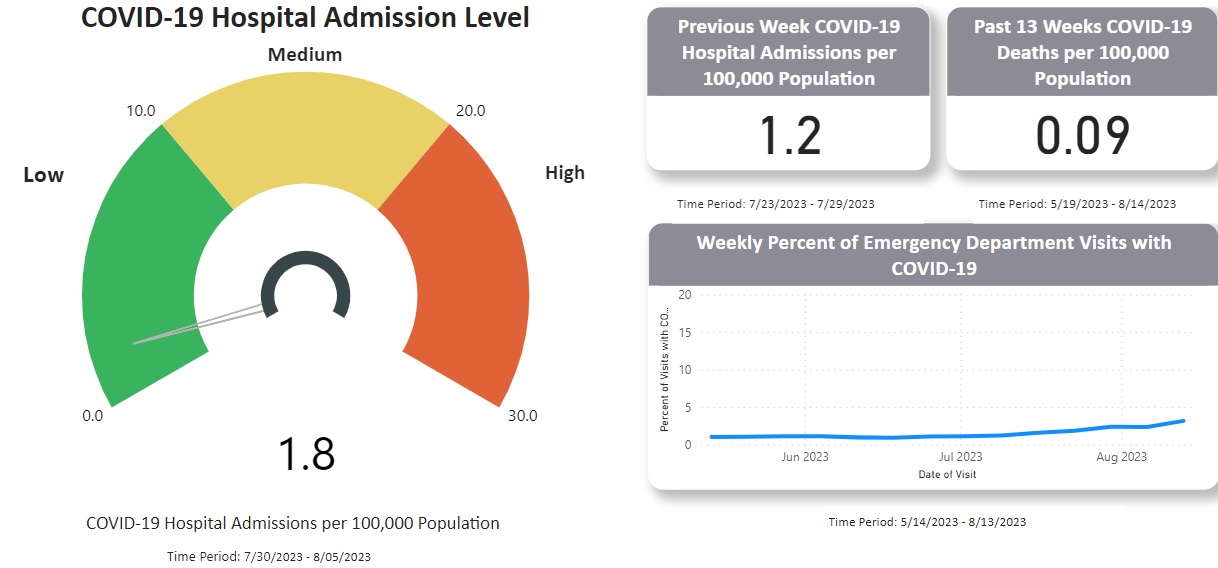
Fairfax County health officials are monitoring a new COVID-19 variant that has gained traction in the U.S., becoming the most prevalent strain of the disease.
Since the pandemic ceased to be an official national health emergency in May, Covid has faded to the background for many, even as others struggle with long-term health issues after getting infected.
However, hospitalizations, test positivity rates and deaths have been on the rise across the country since early July, according to Centers for Disease Control and Prevention data.
Fairfax County’s hospitalization rate remains low at 1.8 admissions per 100,000 residents for the week of July 30 to Aug. 5 — an increase from 1.2 admissions over the previous week. There were 35 hospital admissions that week, a 45.8% increase, and the percent of emergency department visitors diagnosed with Covid has gone from 1.1% for the week of July 2 to 3.2% last week.
The increase in Covid-related hospital visits coincides with the spread of the EG.5 variant, though officials say there’s no indication so far that it has exacerbated the disease’s severity. The variant now accounts for over 17% of cases nationwide, according to the CDC.
The Fairfax County Health Department says it’s “closely” tracking the variant’s circulation, but in Northern Virginia, levels were “either below detection or unchanged for the most recent reporting period available” based on wastewater surveillance, which can be used to detect the coronavirus that causes Covid.
“While the increase in the EG.5 variant may not be considered of high concern to most people in the general population, those who are more vulnerable to serious illness are urged to take steps to prevent illness and protect their health,” the FCHD said, advising community members to watch out for symptoms and get a test if needed.
Covid testing has become more complicated since the federal state of emergency ended, prompting a suspension of the government’s free program and enabling insurers to start charging for at-home kits. Testing sites can be found through the Virginia Department of Health’s online locator.
The FCHD will still provide testing to people who have symptoms, lack access to other options, have been identified as a close contact of someone with Covid or recently returned traveling internationally. Appointments can be scheduled by calling 703-246-2411.
With Fairfax County Public Schools kicking off its new academic year today (Monday), the county health department will “work closely with FCPS on health issues that impact the student and staff populations,” FCHD spokesperson Lucy Caldwell said.
“The Virginia Department of Health provides free at-home COVID test kits to all K-12 schools and childcare facilities in Virginia, so FCPS and other school systems have testing resources available upon request,” Caldwell told FFXnow. “It is my understanding that FCPS has ordered tests and will provide them to students who appear ill with covid-like symptoms in the health rooms.” Read More

A virtual theater launched by South Lakes High School alumni is officially closing its curtains.
Walking Shadow Readers Theatre announced the company’s closure in an email on Monday (July 17). The company closed due to lack of capacity, a team member said.
The theater will officially go dark on July 31.
“When we began during the 2020 COVID-19 pandemic, our aim was to help keep theatre alive while the world shut down,” Walking Shadow Readers wrote in the announcement. “With your support, our virtual platform proved to be a resounding success, more than we imagined! The successes we’ve experienced make it that much more difficult to announce we have decided this past 2022-2023 season was our last.”
The model was established in the thick of the COVID-19 pandemic. It kicked off in June 2020 as a casual reunion of South Lakes drama alumni before organizing virtual readings and performances.
The theater celebrated its first season with a One Acts Festival, which featured eight short plays in the summer of 2021. The program was streamed on YouTube.
Since it was founded, the theater presented developmental readings of 26 new plays — some of which became published works or were presented in person once theaters reopened. It offered new and up-and-coming playwrights a chance to have their work reviewed and experienced.
“It has been an absolute pleasure to help establish and participate in this new theatrical medium these past three years,” the company wrote. “Working with playwrights as their stories evolve, and hearing artists give voice to the characters the world has yet to meet, has been an incredible adventure.”
The team thanks its playwrights, guest artists and audience members for their support. In a response to a request for information to FFXnow, the team declined comment.
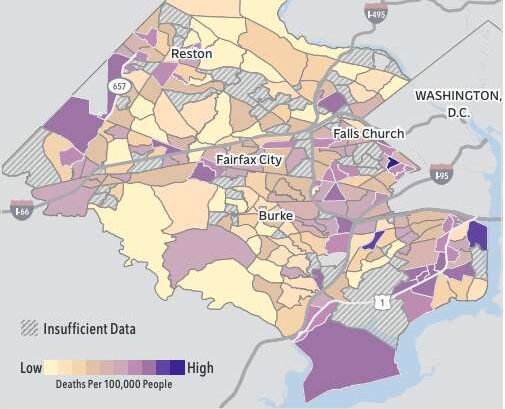
Black residents have experienced worse health outcomes than other populations across Northern Virginia, especially during the COVID-19 pandemic, a new report found.
Commissioned by the Northern Virginia Health Foundation (NVHF) and conducted by the Center on Society and Health at Virginia Commonwealth University, the Fairfax County section of the “Dying Too Soon” report found “stark” disparities across the county in the rates at which people die before the age of 75.
The report attributed the dramatic differences in life expectancies — from 76.5 years to 91.1 years — to an individual’s race, ethnicity and address, reflecting the influence of socioeconomic conditions on health outcomes.
According to the report, a lack of access to health care contributed to 66% of premature deaths in the county from 2015-2019 that were avoidable with preventative measures or treatment.
Throughout Northern Virginia, premature deaths are more concentrated within “islands of disadvantage,” where residents experience poor living conditions, higher mortality rates, and food and housing insecurity, the report says.
Residents of these neighborhoods are more likely to be people of color and immigrants, a disparity resulting from “the region’s history of segregation and systemic racism” and policies that “systematically block access” to health opportunities and increase exposure to unsafe health conditions, the report said.
Prior to the pandemic, Black people in Fairfax County had a premature death rate of 221.0 per 100,000 residents, exceeding the rates for white people (165.8 per 100,000), Hispanics (126.2 per 100,000) and Asians and Pacific Islanders (112.4 per 100,000).
Those disparities were consistent throughout the region, which “exhibits smaller racial-ethnic disparities” that other parts of the U.S., according to the report.
Though Fairfax County is often touted as one of the richest counties in the U.S., with a median income of $133,974, many of the wealthiest census tracts are located just a few blocks from islands of disadvantage.
In fact, the study says one census tract in Springfield has a premature death rate twice as high as that of a census tract in Franconia only two miles away. Each census tract also showed drastically different education and poverty rates and racial and ethnic compositions.
“I don’t think there’s a sense among the general public that these kinds of health inequities exist in a wealthy area like Northern Virginia, which in aggregate is doing quite well and has a very high quality of life,” Dr. Steven Woolf, lead study author and director emeritus of VCU’s Center on Society and Health, told FFXnow. “But when you zoom in like this to see what’s actually happening, neighborhood by neighborhood, you expose these these pockets of disadvantage that we want the public to know about.”
Census tracts with the highest premature death rates were in Seven Corners/Bailey’s Crossroads and Route 1 regions, according to the report’s summary. The study also reported that poverty rates in Seven Corners/Bailey’s Crossroads, Mount Vernon and Oakton “exceeded 20%, higher than poverty rates in countries like Estonia, Lithuania, Peru, Tajikistan, and Uganda.”
The Covid pandemic only worsened inequitable health outcomes, according to data collected in 2020-2021. The report says the county’s islands of disadvantage “experienced higher COVID-19 death rates,” and Northern Virginia as a whole saw “much higher” death rates among Hispanic and Black populations compared to Asian and white groups. Read More
(Updated 3:45 p.m.) Local charitable organization Western Fairfax Christian Ministries (4511 Daly Drive J) welcomed Sen. Mark Warner through its doors last week.
On Friday, June 16, Warner toured WFCM’s food pantry and warehouse in Chantilly and participated in a roundtable discussion with WFCM leaders and partners, such as the Boys & Girls Club of Greater Washington, Fairfax County Neighborhood and Community Services, Fairfax County Public Schools, Wegmans, Boy Scouts and Kings of Kings Lutheran Church.
WFCM primarily provides financial resources and free food and toiletries to residents of Fairfax County’s Sully District.
WFCM Executive Director Harmonie Taddeo says Warner had reached out to Sully District Supervisor Kathy Smith to see how federal funding designated to the district during the COVID-19 pandemic has been used.
“What an opportunity for him to be able to see that this is how your money’s been spent, right?” Taddeo, who led Warner on the tour of WFCM’s facilities, said. “You approve these bills? Now, here’s literally the milk in the refrigerators that [those bills] paid for.”
In 2020 and 2021, WFCM received $1 million and $1.2 million respectively, from the Coronavirus Aid, Relief and Economic Security (CARES) Act. Emergency rent assistance funds also granted WFCM $5.5 million in 2021, and the American Rescue Plan Act gave WFCM $257,588 in 2022 and $151,480 in 2023, according to a handout provided by the nonprofit.
These funds provided relief for WFCM, which saw a marked increase in need as soon as the pandemic hit.
“Before the pandemic, we were probably serving 300 families a month in the food pantry, and we spiked all the way up to 650,” Taddeo said. “Now we’re about 500 to 550 every single month…So the needs are just so much greater, and we think they’re going to take a long time to go back.”
With WFCM continuing to experience high demand for its services, Food Pantry Manager Kristine Hurt implored Warner to relay to Congress the significance of funding local food pantries like WFCM.
“I hope you see, beside our hearts, that we’re very efficient with money here,” Hurt said during the discussion. “And when you’re saying you need to cut things, I hope that you can go and share that this is a program that is using every dollar better than anybody else could in my opinion.”
Acknowledging the concerns over the potential decrease in federal funding for local food programs as emergency funds authorized during the pandemic dwindle, Warner told FFXnow that his office will continue to defend local organizations that had been assisted.
“How do we make sure that these great initiatives where we’re really stretching dollars don’t disappear because the Covid funds are going to run out?” Warner said. “…[We’re going to] see if we can do more in terms of direct investment, but also in terms of seeing if we can even give greater tax credit benefits.”
Warner also noted that he plans to continue using his platform to combat food insecurity locally through the Farm Bill, which he co-sponsored with Sen. Tim Kaine in 2018.
“Most of the food programs are actually funded through the Department of Agriculture and the Farm Bill,” Warner said. “[The Farm Bill] usually goes for five years — it sets up all the programs, things like these food relief programs…This is the year that it’s supposed to get renewed. So we’re trying to build in things like this challenge around food deserts.” Read More
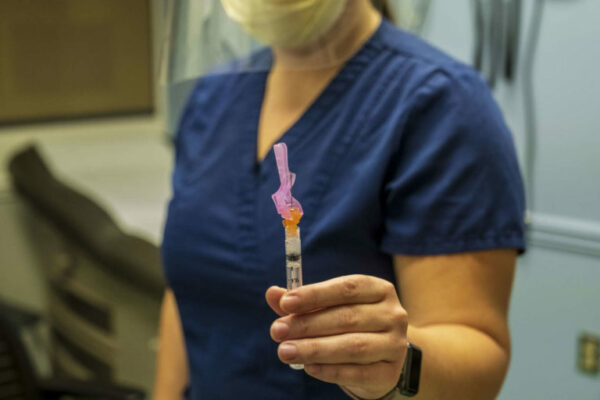
After more than three years, COVID-19 will officially cease to be a federal public health emergency in the U.S. tomorrow (Thursday), bringing an end to the days of free testing and vaccinations.
The Fairfax County Health Department will still provide free services by appointment to people who don’t have insurance or otherwise can’t pay, but private insurance companies and health providers will be allowed to start billing patients, the department explained in a May 5 announcement.
Since they’re considered “preventative care,” vaccines will largely be covered by private insurance, Medicare and Medicaid without a co-pay. But coverage for both at-home and lab tests will depend on individual insurers, and people without insurance will be charged for vaccinations, according to the health department.
The FCHD will end its COVID-19 call center on May 19, so appointments for its free clinics can be made after that date by calling 703-246-7100.
Other options for uninsured individuals include organizations like food banks, homeless services providers and federally qualified health centers that can offer free testing through July 2024, thanks to federal grant programs.
“We encourage anyone who becomes ill with symptoms of COVID or who comes into contact with someone diagnosed with COVID to continue testing to prevent the further spread of illness,” the health department said.
Federal officials declared COVID-19 a national emergency on Jan. 31, 2020, 11 days after the first case in the U.S. was confirmed. The declaration’s end reflects a shift to treating the disease as endemic, meaning it remains present but not at a level that significantly disrupts most people’s daily lives.
FCHD Deputy Director for Medical Services Dr. Parham Jaberi said in a statement to FFXnow:
The end of the emergency does not signal that COVID is over, but we do feel that it no longer impacts our lives in the way it did over the past three years. The “emergency” enabled resources to quickly address our needs for a coordinated response to help our communities get vaccinated, tested and take necessary actions to limit the spread of the virus. While COVID remains a serious illness for some populations in our community such as older adults, very young children, or those with chronic health conditions, it is less of an overall threat to society.
The World Health Organization announced last Friday (May 5) that Covid is no longer a global health emergency, though worldwide, more than 3,000 deaths have been reported over the past week.
On a local level, Fairfax County terminated its state of emergency for the pandemic on March 1, just under three years since it began.
The Fairfax Health District is now averaging 30 new cases per day for the past week — fewer than at any point in the pandemic other than the summer of 2021, according to local and state data. As a result, the impact of a price tag on people’s willingness to get tested and vaccinated “may be limited,” the FCHD says. Read More
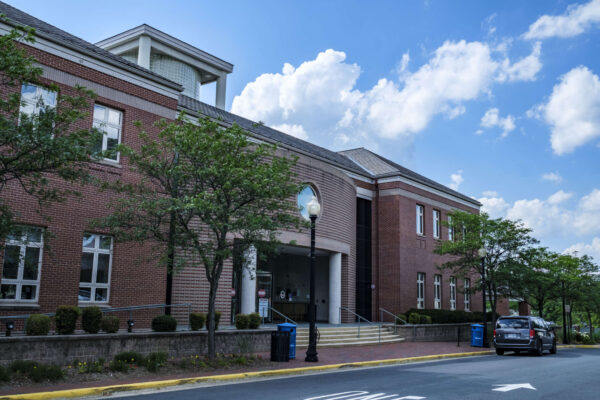
By the end of the March, the COVID-19 pandemic will no longer be declared an emergency in the Town of Herndon.
The move follows efforts by neighboring jurisdictions to end formalized states of emergency.
“All emergency actions in response to COVID-19 have been taken and the public health emergency triggered by COVID-19 has diminished to the point that it no longer necessitates a state of local emergency and disaster,” the draft resolution says.
Fairfax County voted unanimously last month to end its state of emergency on March 1, marking a major public health milestone. Loudoun County, Prince William, Alexandria, and Arlington all took that step last year to end their states of emergency.
Here’s more from town spokeswoman Anne Curtis:
Like other jurisdictions, the COVID pandemic triggered the town’s enactment of a local State of Emergency legislation in March 2020. This enabled the town to adopt a Continuity of Governmental Operations Ordinance, giving us the flexibility and authority to adapt operations and adopt practices that enabled us to weather the emergency, like outdoor dining and fully virtual meetings. The Continuity Ordinance expired by law in late 2021. The act of “formally” repealing will have no effect on the daily lives of town citizens.
The end of the declaration comes exactly three years after the town was in the thick of the pandemic.
The item is up for consideration at a Herndon Town Council meeting at 7 p.m. today (Tuesday).
Currently, community level transmission in Fairfax County is low.

